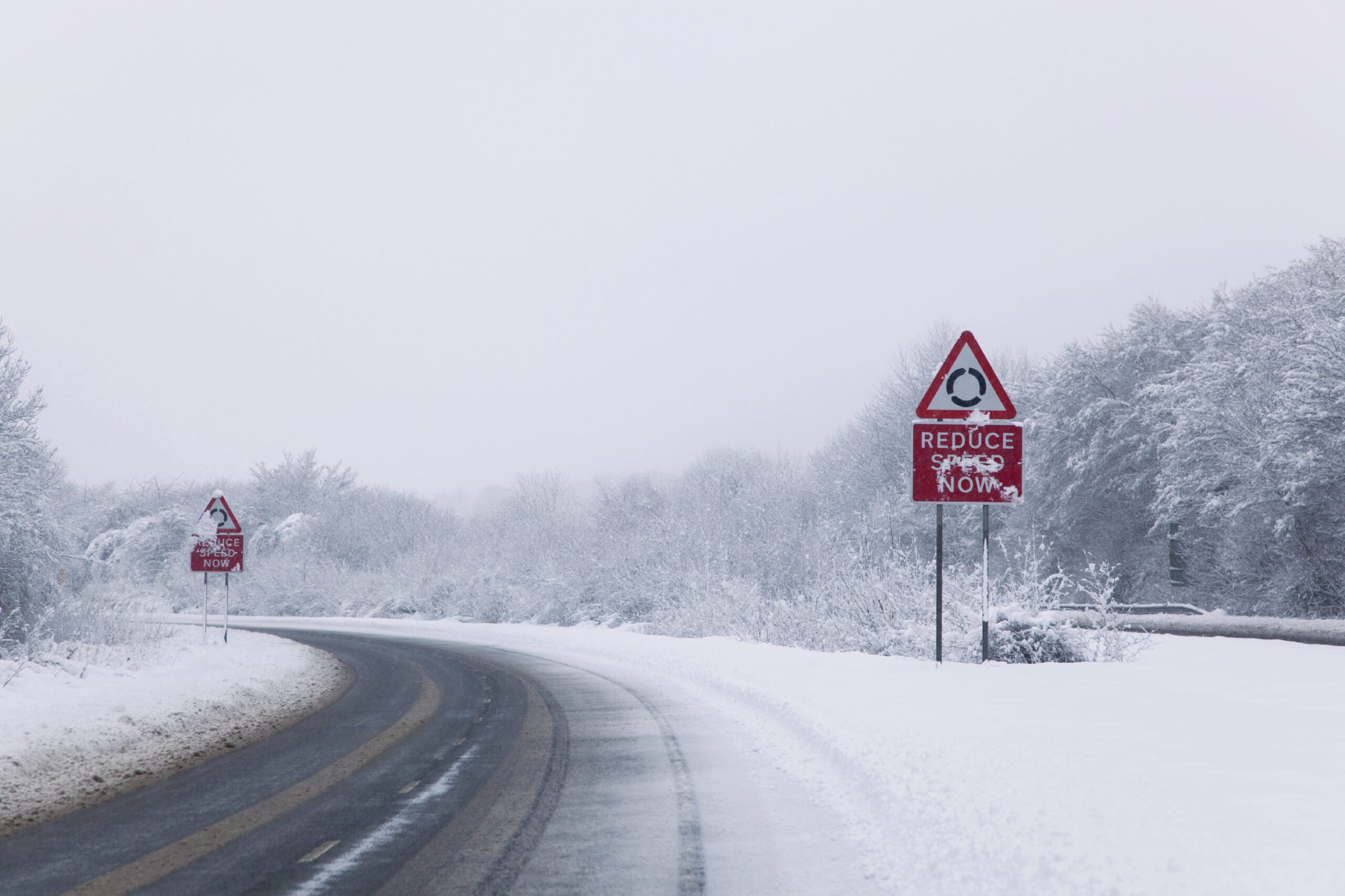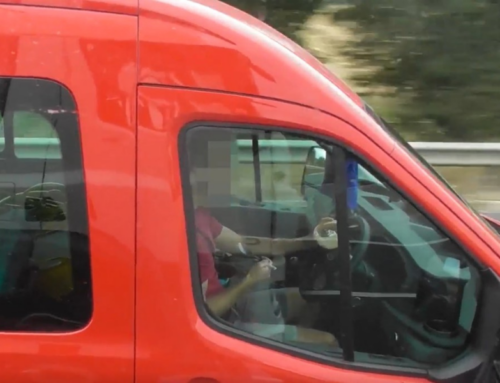Winter Driving – the risks
Winter brings all kinds of challenges for drivers, including rain, snow, ice and low light levels. Being prepared can be the difference between a safe journey and disaster.
You should already have driving for work risk assessments in place, but it’s important to consider specific challenges that winter can bring for drivers. UK weather conditions can alter very quickly, which can be particularly hazardous in winter. The first safety element to consider is the vehicle tyres, because they are the only point of contact between the vehicle and the road. How do you cover tyre safety in your driving for work policy?
TyreSafe says that the crucial acronym to remember is ACT – air, condition and tread. One-third of all motorway incidents, it says, are caused by rear-end shunts.
“Drivers must regularly check tyres for damage, for sufficient tread depth, and that the tyres are properly inflated,” says TyreSafe chair Stuart Lovatt. “The tyres govern how the vehicle handles, corners, and brakes, so they are essential to safety and vehicle responsiveness.”
Tyres for Winter Driving
Tread depth is designed to clear water from the surface of the tyre to stop aquaplaning. If the tread depth is too low, the vehicle performance won’t be reliable on wet roads. Some fleets choose to use winter tyres. These have a higher level of natural rubber, and other compounds, which help the tyre to stay flexible at low temperatures.
However, all season tyres may be the easiest solution for many fleets. These are approximately 20% more expensive than basic tyres, but offer an excellent combination of longevity, with good stopping power and water clearance.
Driving safely in Winter
There is no substitute for driver caution in rain, snow or icy conditions. Drivers should be reminded to slow down, leave longer distances between themselves and traffic in front, and when necessary, apply the brakes gently.
Each type of precipitation brings unique problems – rain and ice can form a slick surface which stops the tyres from gripping the road surface so the vehicle ‘skates’. Snow can impact the tyres and bog the vehicle down. If this happens, make sure your drivers know to clear the snow from the tyres, lay down some old sacking for traction and use second gear to pull away slowly.
Your organisation’s driving for work policy should state what your drivers should do in the event of adverse weather conditions.
Winter driving – vehicle checks
Before every journey your drivers should check that:
- Tyres have good tread and optimal pressure.
- Oil and coolant levels are in line with manufacturer guidelines, including enough antifreeze in the coolant.
- Screen wash is full – windscreens can quickly become obscured by the spray from other vehicles.
- All snow and ice is cleared completely from the whole vehicle – chunks of snow or ice flying off vehicles are a hazard for others.
- Ignition, brakes, exhaust, wipers, washer fluids and lights are all operational.
- That the vehicle has sufficient fuel (or battery range) for the journey.
- Does the driver have sufficient water, appropriate clothing, heat pads, gloves, and a charged mobile phone? A packet of energy bars and a survival sheet are good additions to any glovebox.
Condition your vehicles for use
Idling with or without the driver is not legal, even on a private driveway. It is better for the environment, air quality, and legal compliance to defrost your windscreens manually, with a scraper and some de-icer.
An electric vehicle can usually be pre-conditioned while it is charging, so that the cabin is already warm before use. Encourage drivers to use the seat warmers and steering wheel heater to keep themselves warm, rather than have the AC heat the whole vehicle. This will extend range.
Remember that head winds, and very cold weather will affect winter driving – it will impact the vehicle’s efficiency, and so range could drop faster than drivers or planners might expect.
Planning the journey
- Think about the weather conditions and forecast, and which parts of the journey may be vulnerable to leaf fall, flooding, snowfall or ice. Will you be travelling with the sunrise or sunset affecting your vision?
- If the weather is extreme, cancel journeys which are not absolutely essential.
- Fog is extremely dangerous – drivers must go slowly, hang back and use fog lights or dipped beams.
- Allow more time for your journey.
- Allow more space. Stopping distances in the wet can be ten times longer than in dry weather.
- Slow down. In 2022, 170 collisions involved people driving too fast for the conditions or on slippery roads. According to research by Brake and Green Flag, one-third of drivers do not slow down in wet weather – and 7% drive faster! Another reason to give other drivers plenty of room.
Strong winds – affecting commercial drivers
The UK is regularly visited by storm force winds in winter. In 2022, we had storms Dudley, Eunice, and Franklin, followed by Malik and Corrie. The first February storms closed bridges, felled trees, and left some towns without power, all thanks to the 70mph inland winds. Trains were cancelled and airports closed – and still many companies sent their drivers out in commercial vehicles.
The Met Office advises that 30mph winds are hazardous for driving – it issues yellow weather warnings for 40mph winds and amber or red weather warnings for storms such as those mentioned above. As Storm Ciaran hits the UK this week, five yellow warnings and two amber warnings have been issued, with 70mph winds and heavy rainfall expected.
In April 2023 an HGV was blown over on the M62 in a 40mph wind and blown across three lanes of motorway, closing the road for 90 minutes.
Remember, don’t ask your drivers to travel in challenging conditions unless it cannot be avoided. If the journey is essential, ensure they prepare, plan and proceed with caution.






